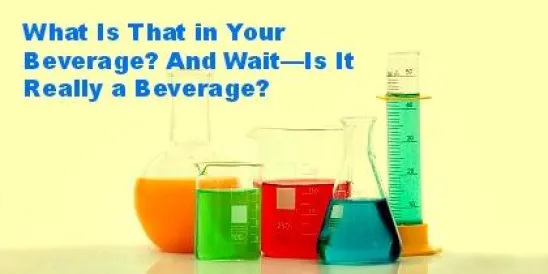FDA “reminds” manufacturers of the requirements for food and dietary supplement ingredients and finalizes long-awaited liquid dietary supplement guidance.
On January 14, the U.S. Food and Drug Administration (FDA or the Agency) issued “Guidance for Industry: Considerations Regarding Substances Added to Foods, Including Beverages and Dietary Supplements” (Considerations Guidance).[1] In the Considerations Guidance, the Agency conspicuously “reminded” food, beverage, and dietary supplement producers of the requirements for food ingredients and dietary ingredients. The FDA issued this guidance because it is has “seen a growth in the marketplace of beverages and other conventional foods that contain novel substances.” The FDA noted three common scenarios that have raised a red flag for the Agency, signaling an increased possibility of unapproved new food ingredients: (1) new ingredients used for the first time; (2) currently used ingredients added to foods at potentially unsafe levels; and (3) currently used ingredients added to new types of foods.
On the same day, the FDA issued “Guidance for Industry: Distinguishing Liquid Dietary Supplements from Beverages” (Liquid Supplements Guidance).[2] The Liquid Supplements Guidance is intended to help manufacturers and distributors determine whether a liquid product should be classified as a dietary supplement or as a beverage. The FDA stated that the guidance was issued for two reasons. First, it listed factors that manufacturers and distributors should consider when determining whether their liquid product should properly be marketed as a dietary supplement or as a beverage. Second, it reminded manufacturers and distributors of the statutory requirements in the Federal Food, Drug, and Cosmetic Act (FDCA) for dietary supplement products.
Considerations Guidance
In its Considerations Guidance, the Agency stressed that food additives require premarket approval and that the use of an unapproved food additive in a food or beverage causes the food to be adulterated.[3]There are two exceptions to premarket approval of food additives—substances that are generally recognized as safe (GRAS) and substances excluded from the “food additive” definition (such as prior sanctioned substances, color additives, etc.). To qualify for GRAS status, a substance must be safe and the evidence supporting its safety must be generally known and accepted by qualified experts.[4] The Agency noted that GRAS status requires the additive be safe for its intended use.
With respect to dietary supplements, the FDA noted that dietary ingredients used in supplements do not have to be GRAS as they are exempt from the “food additive” definition.[5] However, the FDA emphasized that nondietary ingredients added to supplements such as binders, excipients, and fillers are not exempt from food additive regulations. Thus, nondietary ingredients must be GRAS for their intended use or go through premarket approval for food additives.
It is worth noting that the Considerations Guidance does not cover any new ground or represent a shift in the FDA’s policies or thinking. Rather, the guidance is a brief restatement of well-established FDA interpretation of the FDCA.
Liquid Supplements Guidance
In its Liquid Supplements Guidance, the FDA listed factors that it considers to be relevant when determining whether a liquid product is a dietary supplement or a beverage. This final guidance generally maintains the principles found in the 2009 Draft Liquid Supplements Guidance;[6] however, the Agency has greatly expanded the discussion and provided a number of examples to illustrate its current thinking.
The Liquid Supplements Guidance discusses distinguishing factors that can be used to determine whether a liquid product is a dietary supplement or beverage. These distinguishing factors include product or brand name, packaging, serving size and total recommended daily intake, composition, recommendations and directions for use, statements, implied claims, or graphic representations in labeling or other marketing practices. The Agency noted that, in most cases, a combination of factors will determine whether the product is a beverage or a dietary supplement; although, in some circumstances, a single factor can be dispositive. This follows well-established precedent that the overall context of a product’s packaging and labeling will be considered in establishing its intended use, i.e., as a conventional food or a dietary supplement.
The FDA also addressed premix powders and liquid concentrates, stating that powdered premix products and liquid concentrates are unlikely to be confused with beverage mixes when they are labeled as a dietary supplement as long as they are not otherwise represented as a beverage or beverage alternative. Typically, the FDA would not view liquid concentrates as beverages when labeled properly as a dietary supplement.
The FDA used the Liquid Supplements Guidance to again reiterate the requirements for ingredients in conventional foods and dietary supplements. The Agency noted that beverages are classified as conventional foods, and, thus, the food additive requirements apply with equal force to beverages. Further, the FDA set forth the requirements for new dietary ingredients used in dietary supplements and reiterated the food additive or GRAS requirements for nondietary ingredients added to dietary supplements.
The FDA also outlined the regulatory requirements for the labeling of beverages and liquid dietary supplements. These include a general prohibition on false or misleading labeling and requirements for health claims, nutrient content claims, structure/function claims for foods, structure/function claims for dietary supplements, and general food labeling requirements.
Impact of the Guidance Documents
These guidance documents, when taken together, may be seen as a response to the massive growth of the energy and health-drink market, which has seen many botanical and other ingredients added to beverages. Along with that rapid market growth, criticism of the Agency’s oversight of these products and the current ingredient review processes has also grown. A number of interest groups have voiced their dissatisfaction with the FDA’s level of enforcement in the food and dietary supplement space, and the Considerations Guidance, in particular, is a direct response to some of these criticisms.
Individual products and certain ingredients have been targets of petitions and complaints to the Agency, questioning the regulatory status and safety of these products. Companies have been targeted in online petitions and public campaigns designed to change formulations or marketing practices where the FDA has not acted.
Accordingly, while the two guidance documents do not cover significant new ground, the industry should note that they may signal a shift in the Agency’s level of enforcement. The guidance documents provide a clear (and finalized) restatement of the FDA’s interpretation of the statutory requirements for food and supplement ingredients and labeling. With the Agency under pressure from interest groups and legislators, the publication of the Considerations Guidance and the Liquid Supplements Guidance, which both “remind” the industry of the law, could very well signal intent to increase the Agency’s level of enforcement with respect to ingredient/dietary ingredient issues.
Companies should review their products in light of these guidance documents and consider whether there are any vulnerabilities in their products’ formulations, labeling, or marketing.
[1]. View the Considerations Guidance.
[2]. View the Liquid Supplements Guidance.
[3]. 21 U.S.C. § 342(a)(2)(C).
[4]. 21 C.F.R. § 170.3(i).
[5]. 21 U.S.C. § 321(s).
[6]. 74 Fed. Red. 63,759 (Dec. 4, 2009).




 />i
/>i
